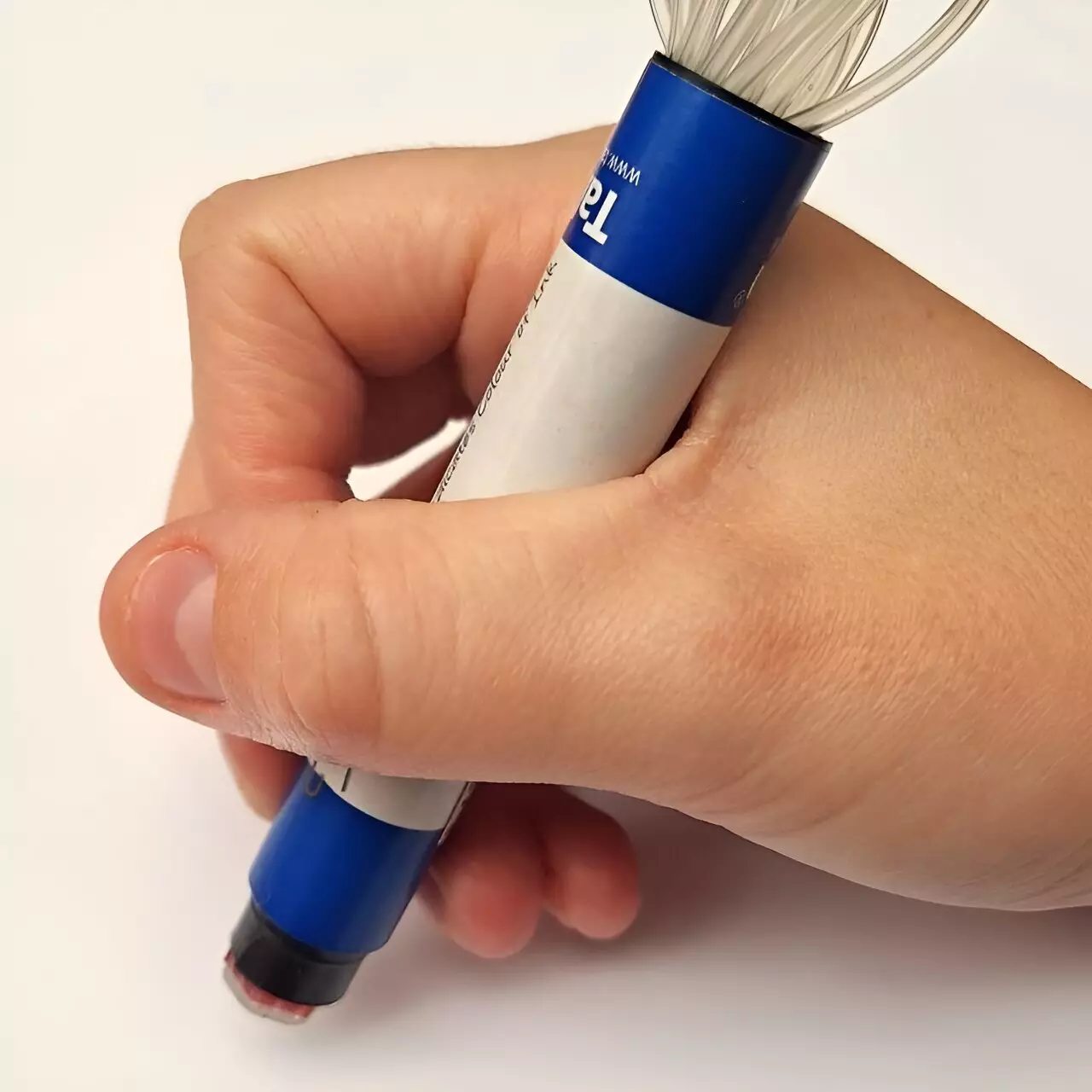In recent years, there has been a troubling decline in Braille literacy among visually impaired individuals, a trend that is counterintuitive given the expressed interest in learning Braille. This paradox stems largely from a lack of accessible learning resources, particularly in rural areas far removed from urban centers where specialized support is often available. With increasing reliance on technology, many people might assume that traditional literacy skills like Braille would fade into obscurity. However, the importance of Braille as a critical communication skill among visually impaired populations remains undeniable. A recent development from experts at the University of Bristol aims to address this gap through innovation.
At the forefront of this initiative is the Braille-tip, a handheld device that can efficiently convert Braille text into English. This innovative pen-like tool features a compact sensor equipped with 19 micro-channels designed to read tactile Braille bumps with remarkable accuracy. By utilizing cutting-edge technology, the Braille-tip empowers users to learn and practice Braille independently and in real-time, effectively bridging the gap between traditional tactile reading and modern educational needs.
Lead researcher Dr. George Jenkinson noted that the device’s creation was motivated by the need for an independent learning tool to enhance Braille literacy. Through intuitive design, the Braille-tip aims not only to facilitate reading but also to engage users in a more meaningful learning experience. With its ability to process tactile information and convert it to audible English, the device stands to revolutionize how individuals approach Braille as a literacy medium.
The functionality of the Braille-tip is rooted in its unique design, employing fluid channels that transmit sensory data from 19 sensitive areas beneath a silicone membrane to a single processing unit. This means that the device can register raised Braille dots on dedicated Braille paper, translating them into precise English text. Preliminary trials have shown an impressive success rate of approximately 84.5% when operated manually.
Unlike other reading devices that rely heavily on machine learning, the Braille-tip’s algorithm operates in real-time without extensive training, making it more accessible and easier to use. This predictability and straightforward interface make it more versatile for individuals learning to read Braille, offering a practical method for quick comprehension and skill enhancement.
The implications of the Braille-tip extend beyond mere literacy; they encompass social inclusion and empowerment for visually impaired individuals. By providing an influential tool that supports independent learning, this invention can positively affect how individuals navigate public spaces laden with Braille signage—like transit stations, elevators, and various services. Effective use of such a device can encourage societal integration, enabling Braille-illiterate individuals to engage with their environment and gain confidence through practice.
Dr. Jenkinson emphasizes the importance of user participation in the device’s design process. Feedback from individuals who will ultimately use the Braille-tip can guide future enhancements, ensuring the device meets the unique needs of its intended audience. Adopting a co-design approach will likely foster greater acceptance and success rates among users, resulting in a more effective learning tool.
As the development team prepares for more rigorous testing and user engagement, the path forward looks optimistic. The potential for improvement in accuracy and user experience is substantial, presenting an opportunity for further innovation in device design.
The urgent need for increased Braille literacy and accessibility cannot be overstated. The introduction of devices like the Braille-tip stands to not only provide educational resources but also to act as a catalyst for a broader societal understanding of the value of Braille literacy. Ensuring that visually impaired individuals can learn and read independently opens the door to greater self-sufficiency and engagement with the world around them.
The Braille-tip is more than just a new technological gadget; it represents a heartfelt commitment to enhancing literacy and independence among visually impaired individuals. By supporting learning and accessibility, we can foster an inclusive environment where everyone, regardless of their vision, can thrive.


Leave a Reply